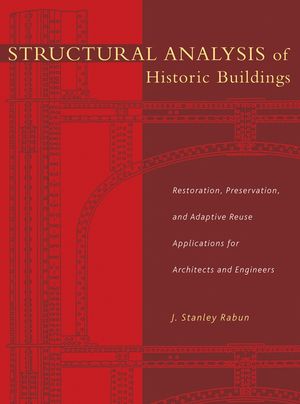Structural Analysis of Historic Buildings: Restoration, Preservation, and Adaptive Reuse Applications for Architects and EngineersISBN: 978-0-471-31545-2
Hardcover
512 pages
February 2000
 This is a Print-on-Demand title. It will be printed specifically to fill your order. Please allow an additional 15-20 days delivery time. The book is not returnable.
|
||||||
Structural Analysis of Historic Buildings offers the most' complete, detailed, and authentic data available on the materials, calculation methods, and design techniques used by architects and engineers of the nineteenth and early twentieth centuries. It provides today's building professionals with information needed to analyze, modify, and certify historic buildings for modern use. Among the many important features of this book not available in any other single volume are:
* More than 350 line drawings and diagrams taken directly from original sources such as the Carnegie Steele Company's Pocket Companion (1893) and Frank Kidder's The Architect's and Builder's Pocketbook (1902)
* Hard-to-find data on period structural components, such as cast-iron columns and beams, wrought-iron columns and beams, and fireproof terra cotta floor arches
* Methods for determining what kind of loads structural components were originally designed to bear and methods to determine if they are still capable of performing as intended
* Extensive coverage of historical foundation systems and empirical design methods for load-bearing masonry buildings
For any building professional involved in the rapidly growing field of restoring, preserving, and adapting historic buildings, Structural Analysis of Historic Buildings is an invaluable structural handbook.
* More than 350 line drawings and diagrams taken directly from original sources such as the Carnegie Steele Company's Pocket Companion (1893) and Frank Kidder's The Architect's and Builder's Pocketbook (1902)
* Hard-to-find data on period structural components, such as cast-iron columns and beams, wrought-iron columns and beams, and fireproof terra cotta floor arches
* Methods for determining what kind of loads structural components were originally designed to bear and methods to determine if they are still capable of performing as intended
* Extensive coverage of historical foundation systems and empirical design methods for load-bearing masonry buildings
For any building professional involved in the rapidly growing field of restoring, preserving, and adapting historic buildings, Structural Analysis of Historic Buildings is an invaluable structural handbook.



